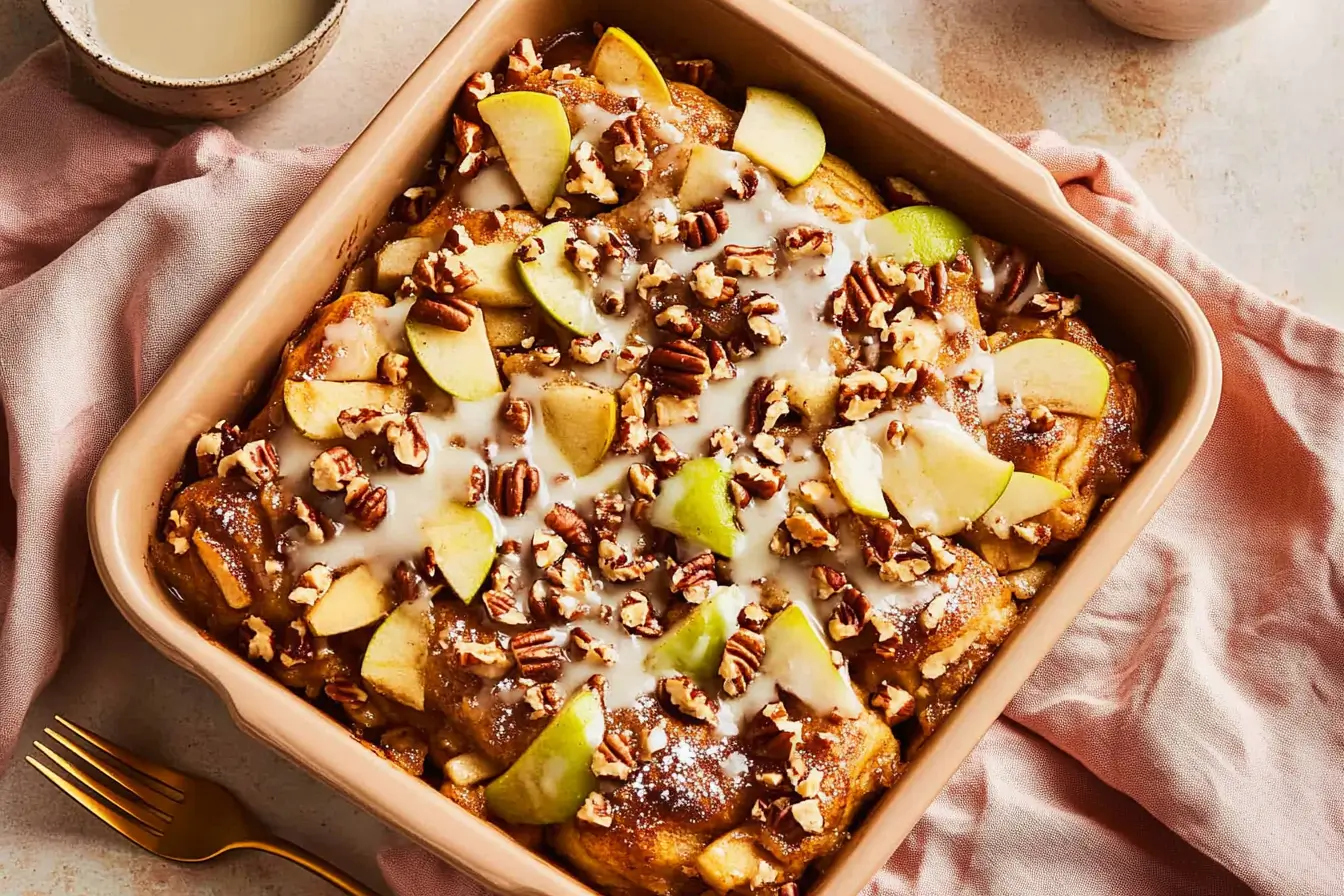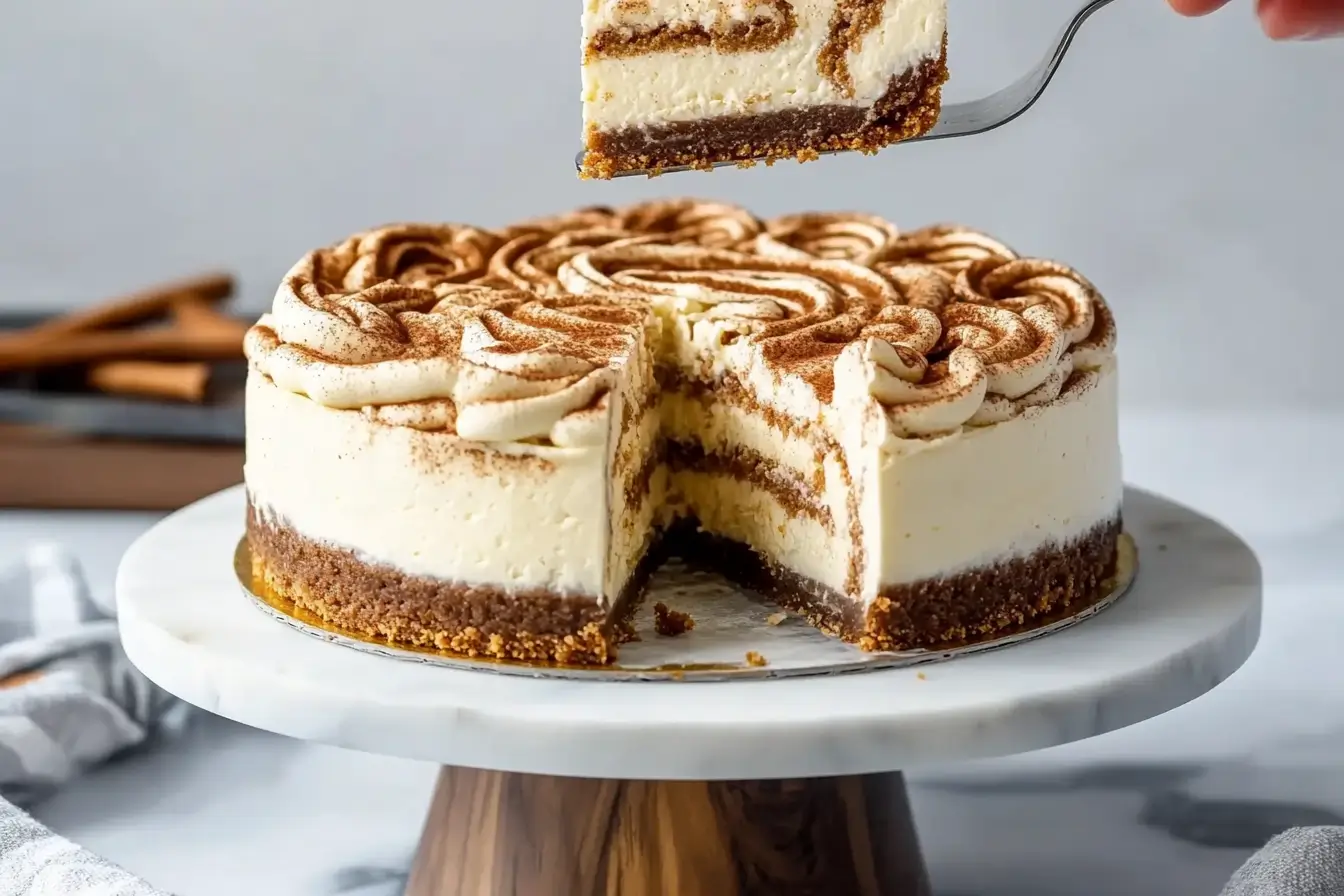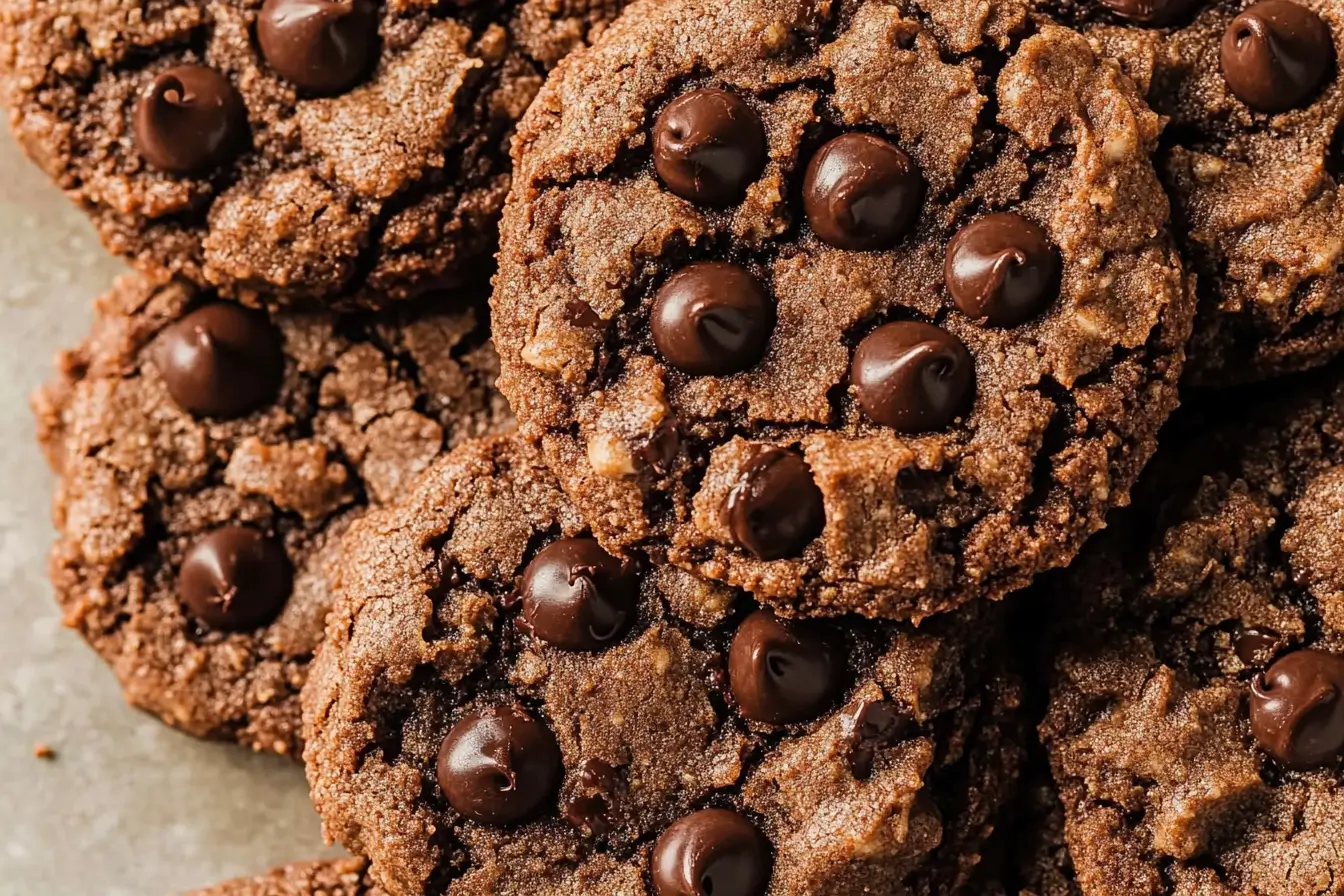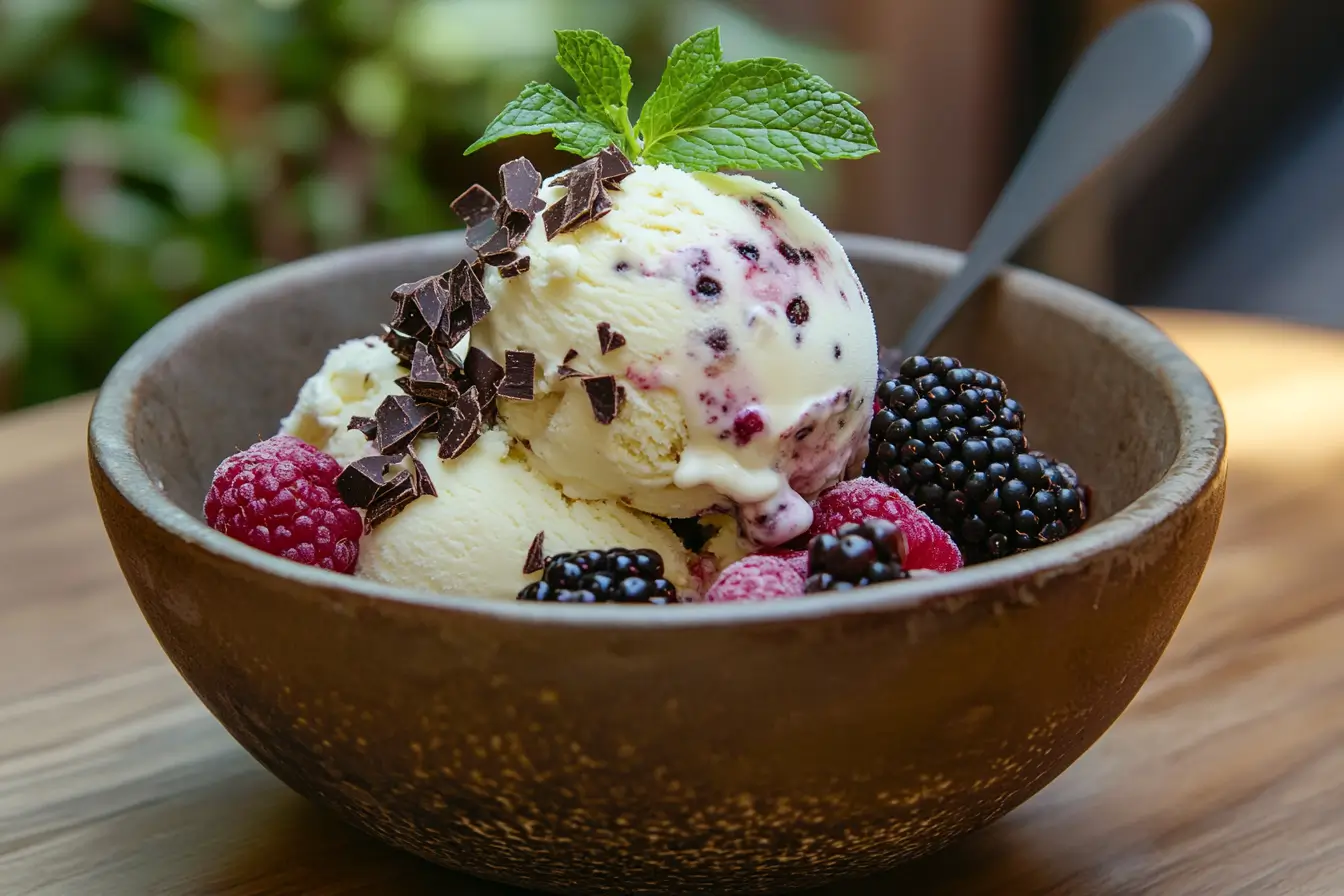The aroma of freshly baked bread fills your kitchen, mingling with the subtle scent of cocoa. Welcome to the world of chocolate sourdough bread, where artisan baking meets indulgence.
Picture yourself enjoying a slice of warm,, dark bread with a perfect crust. The rich cocoa flavor dances on your tongue, balanced by the tangy sourness of fermented dough. This isn’t just bread; it’s a celebration of contrasts and the art of baking.
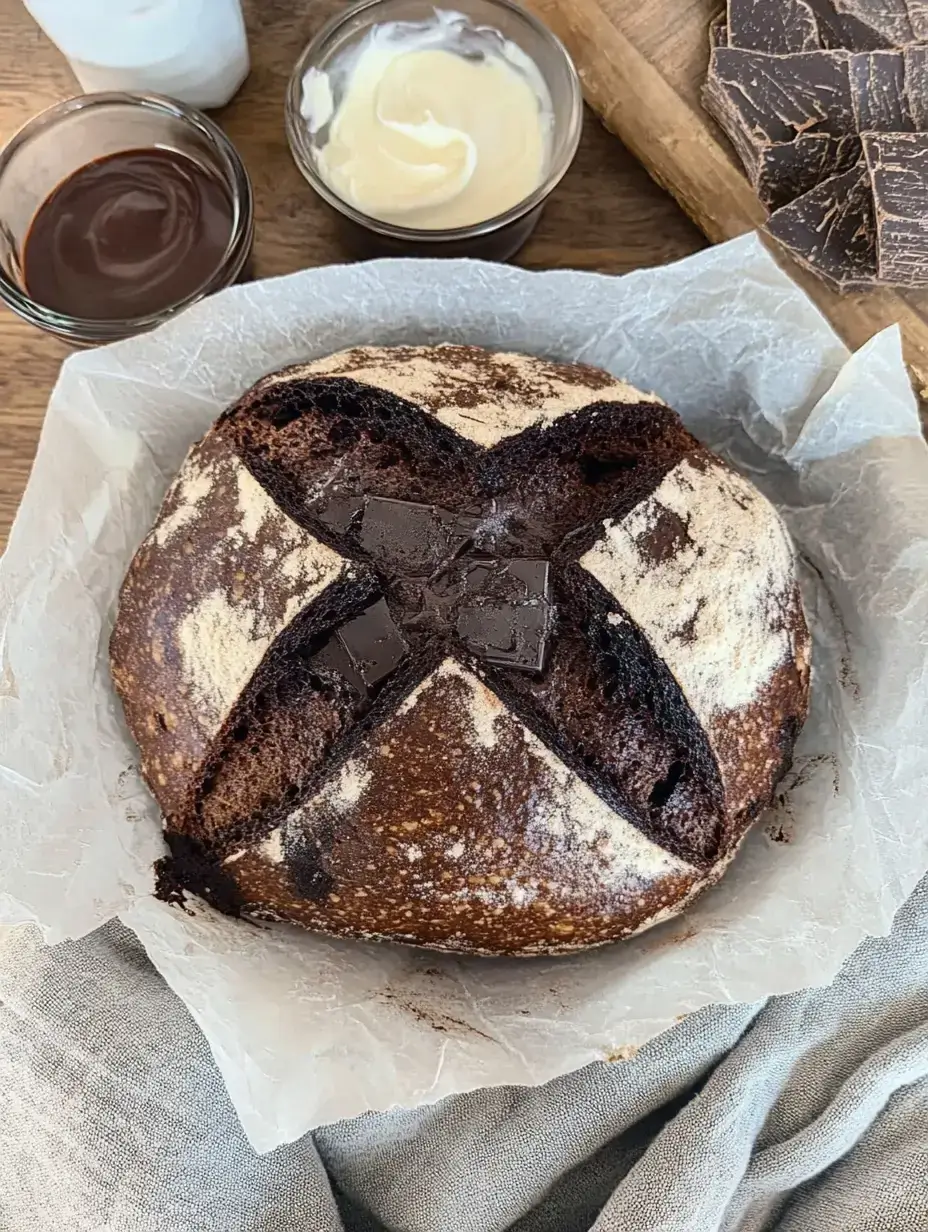
Understanding the Magic of Chocolate Sourdough Bread
Chocolate sourdough bread is a combination of two favorites. It’s a special twist on sourdough, blending flavors in a new way. Let’s explore the science, history, and benefits of this tasty treat.
The Science Behind Fermentation and Cocoa
The magic happens when fermentation meets cocoa. Your sourdough starter has wild yeast and bacteria. They break down carbs, making the bread taste and feel better.
History of Chocolate in Artisan Bread Making
Artisan bakers have always played with chocolate in bread. In the 19th century, European bakers started adding cocoa. Now, chocolate sourdough is a new twist on old techniques.
Benefits of Combining Sourdough and Chocolate
Putting sourdough and chocolate together is more than tasty. The fermentation process makes nutrients easier to use, and cocoa adds antioxidants, making the bread healthier.
- Enhanced flavor profile
- Improved digestibility
- Increased nutrient absorption
- Extended shelf life
Mastering chocolate sourdough boosts your baking skills. It creates a bread that looks great and tastes amazing. The mix of sourdough starter and cocoa makes it unique.
Essential Ingredients for Perfect Chocolate Sourdough
To make a tasty chocolate bread, start by getting the right ingredients. You’ll need a mix of whole grain and all-purpose flours. These flours add depth and nutrition to your loaf.
- Active sourdough starter
- Bread flour
- Whole wheat flour
- High-quality cocoa powder
- Salt
- Water
- Honey or maple syrup (optional)
The sourdough starter gives your bread a tangy flavor. Bread flour adds structure, while whole wheat flour brings texture and nutrients. Cocoa powder makes your loaf rich in chocolate flavor.
Salt improves taste and strengthens gluten. Water keeps the dough hydrated. A bit of sweetener balances the cocoa’s bitterness. With these ingredients, you’re set to start your chocolate sourdough adventure.
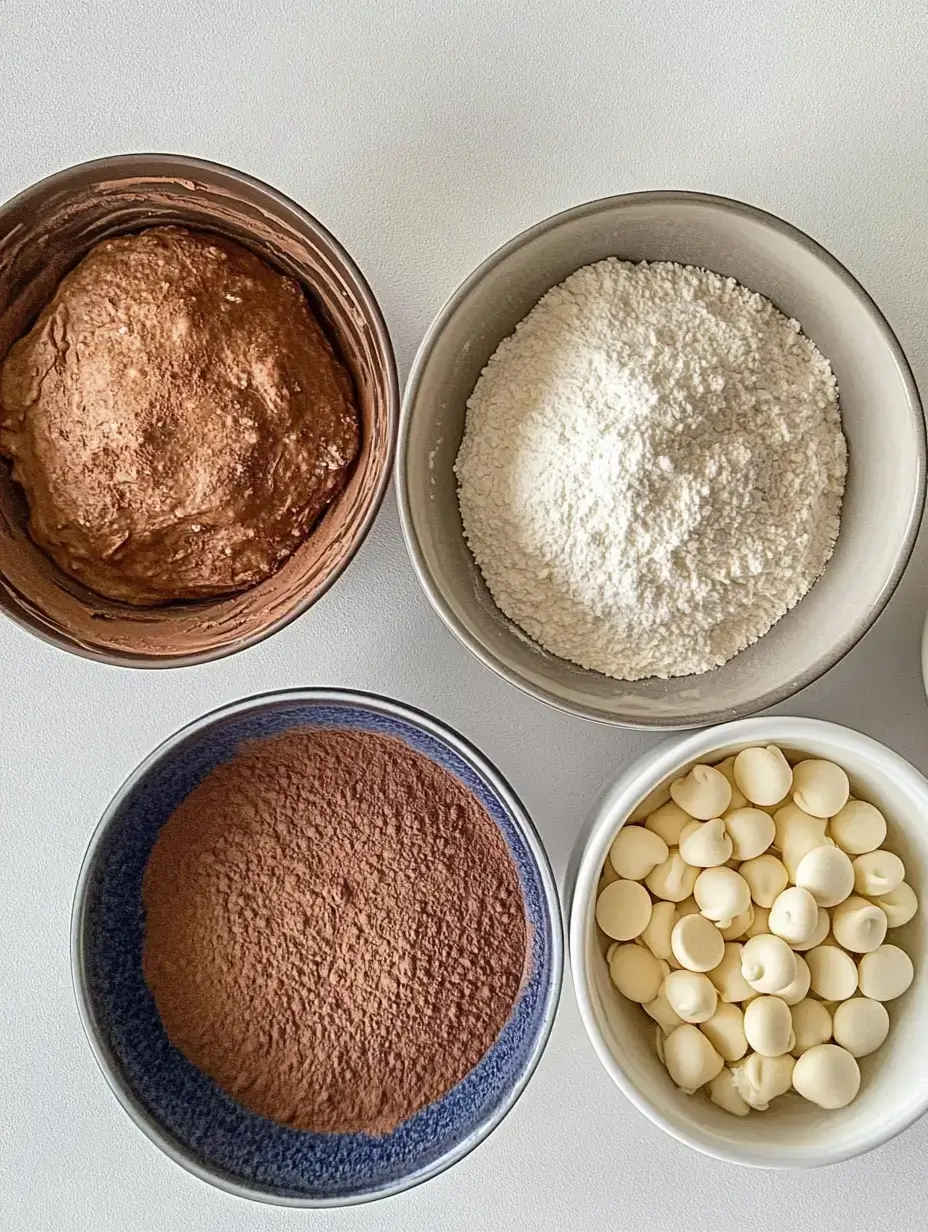
Maintaining Your Sourdough Starter for Chocolate Bread
Keeping your sourdough starter healthy is crucial for making great chocolate bread. A well-cared-for starter gives your dough the perfect flavor and rise. Let’s explore the basics of sourdough starter care.
Feeding Schedule and Ratios
Feed your starter once or twice a day, based on the room’s temperature. Use a 1:1:1 ratio of starter, flour, and water by weight. For chocolate bread, add a bit of cocoa powder to your feeding mix. This helps the starter get used to the flavor.
Signs of a Healthy Starter
A healthy sourdough starter will double in size in 4-8 hours after feeding. It should smell tangy and have lots of bubbles. The texture should be creamy and slightly elastic when you stir it.
Troubleshooting Common Starter Issues
If your starter isn’t rising, try using warmer water or moving it to a warmer spot. A starter with a strong vinegar smell needs more frequent feedings. For a slow starter, discard most of it and start again with fresh flour and water. Remember, patience is key in bread crafting!
- Hooch on top? Your starter is hungry. Pour it off and feed immediately.
- Mold growing? Sadly, it’s time to start over.
- Too thick or thin? Adjust your water ratio slightly in the next feeding.
With these tips, your sourdough starter will be ready to make amazing chocolate bread. Happy fermenting!
Choosing the Right Cocoa for Your Bread
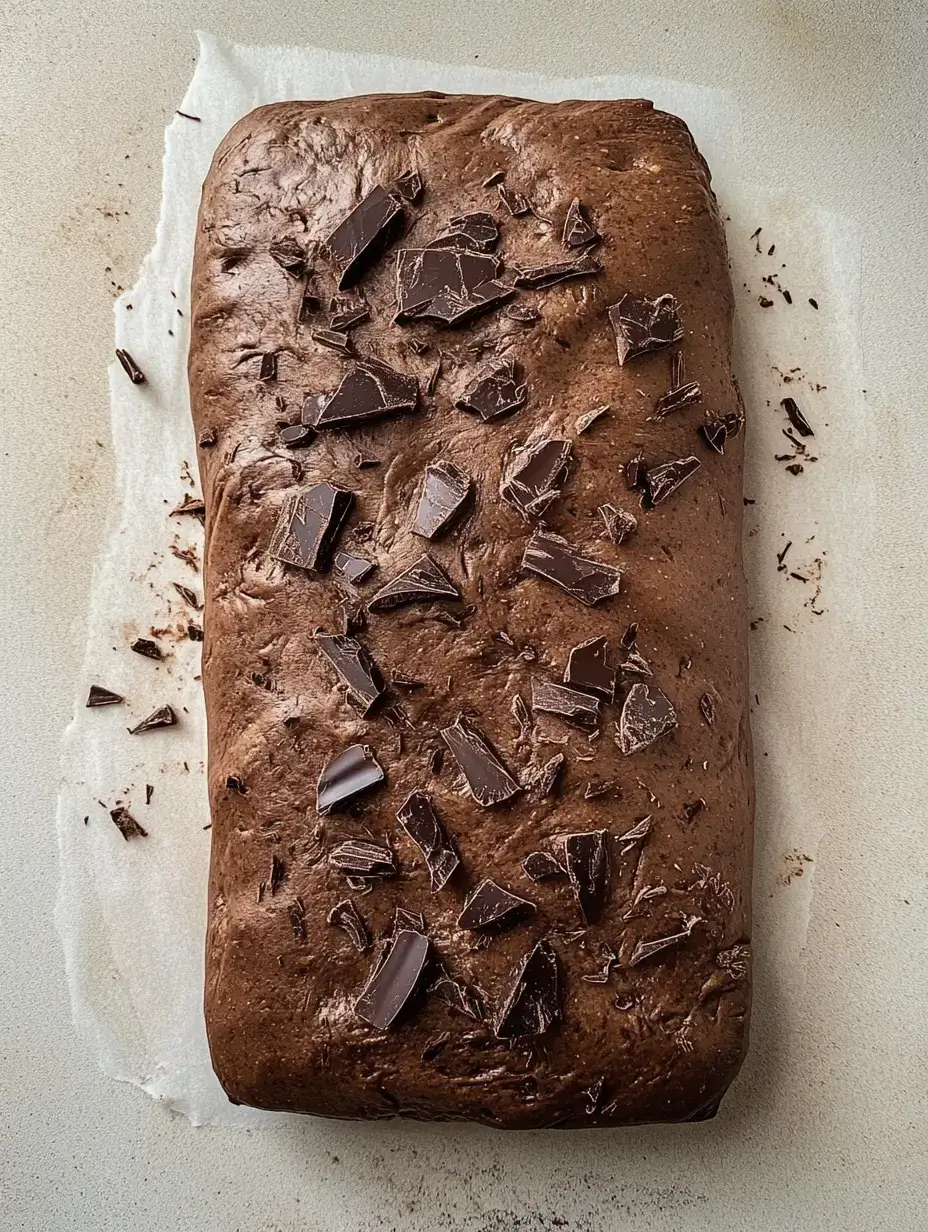
When making cocoa enriched bread, picking the right cocoa powder is key. It affects the taste, texture, and look of your bread. Let’s dive into the world of cocoa and how it can make your chocolate bread better.
Natural cocoa powder is acidic and light. It gives a sharp, intense chocolate taste. This is great for bold chocolate bread. Dutch-processed cocoa is milder and darker. It’s perfect for a subtle chocolate flavor in your bread.
For the best cocoa enriched bread:
- Choose high-quality cocoa with at least 22-24% fat content
- Opt for unsweetened cocoa to control sweetness in your recipe
- Consider using a mix of natural and Dutch-processed for a balanced flavor
Try different cocoa types to find your perfect chocolate bread recipe. The cocoa you pick will greatly affect your bread’s taste and look. Start with small batches to get your artisan baking just right and make the ultimate cocoa enriched bread.
Step-by-Step Mixing and Kneading Techniques
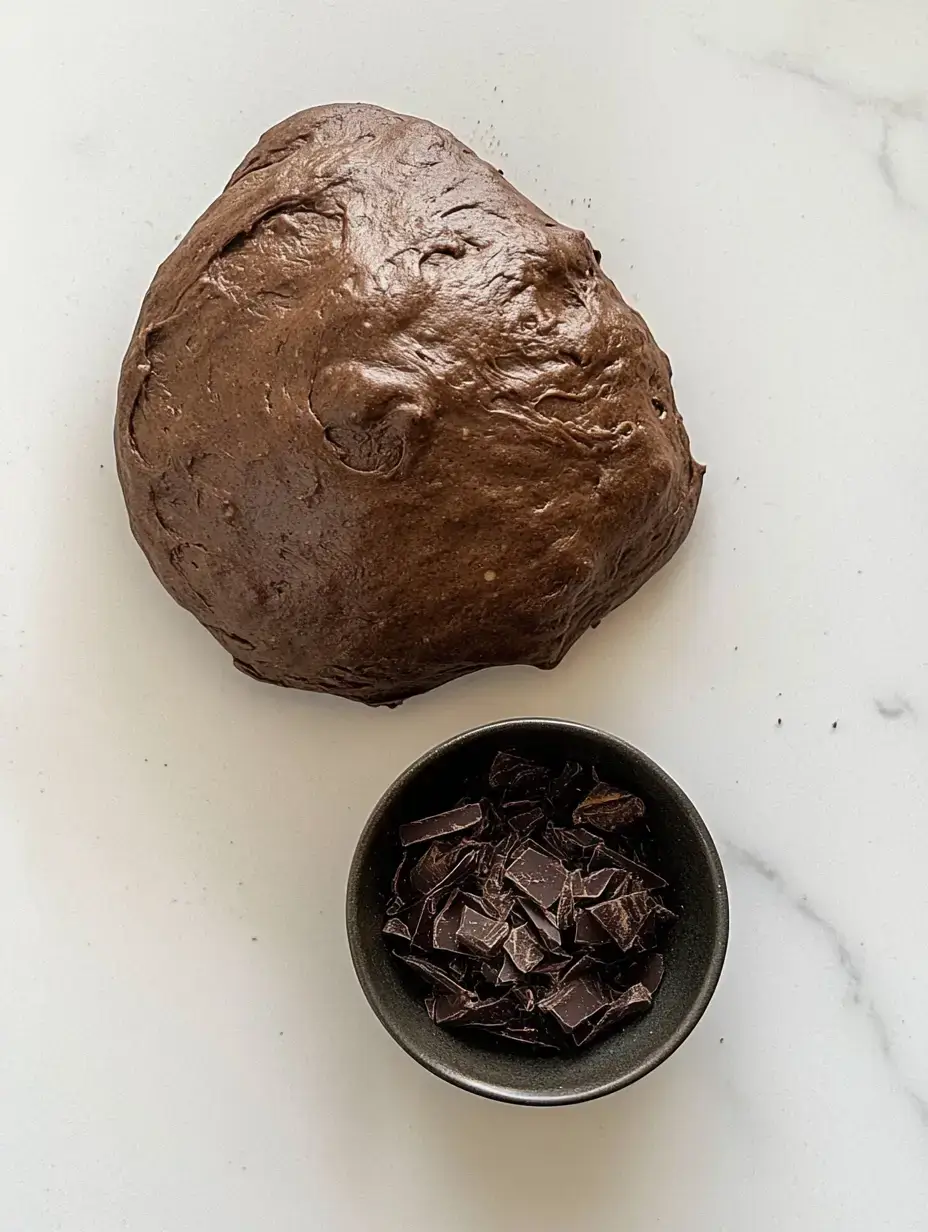
Learning to mix and knead is key for making tasty homemade bread. Let’s dive into the bread baking techniques needed for a perfect chocolate sourdough loaf.
Initial Mixing Methods
Begin by mixing your dry ingredients in a big bowl. Then, add the wet ingredients, like your active sourdough starter. Keep mixing until the dough forms a shaggy mass.
Developing Gluten Structure
Kneading is what makes your bread’s texture special. Use the stretch and fold method:
- Grab one edge of the dough
- Stretch it upward
- Fold it over the center
- Rotate the bowl and repeat
Do this every 30 minutes for 2-3 hours. Your dough will get smoother and more elastic with each fold.
Incorporating Chocolate Elements
Introduce chocolate to your sourdough after the gluten is developed. Fold in cocoa powder or chopped chocolate gently. This way, you avoid overworking the dough and ensure chocolate is evenly spread.
Remember, patience is crucial in sourdough bread baking. Take your time with each step. This will help you create a rich, flavorful loaf that shows off your bread baking skills.
Mastering the Bulk Fermentation Process
Bulk fermentation is key to making tasty chocolate sourdough bread. It lets your dough develop flavor and structure. After mixing, let it rest in a warm spot for 4-6 hours.
During this time, your sourdough starter does its magic. Wild yeast and bacteria break down the flour, creating tangy flavors. Watch your dough as it grows and gets small bubbles on the surface.
For the best results, keep the temperature between 75-80°F (24-27°C). This helps fermentation happen smoothly without overworking the dough. If it’s cooler, use a proofing box or oven light for warmth.
To see if your dough is ready, try the poke test:
- Gently poke the dough with a floured finger
- If the indentation springs back quickly, it needs more time
- If it springs back slowly and leaves a slight mark, it’s ready for shaping
Remember, patience is key with fermented dough. Trust the process and soon you’ll have perfectly chocolatey sourdough bread.
Shaping and Scoring Your Chocolate Sourdough
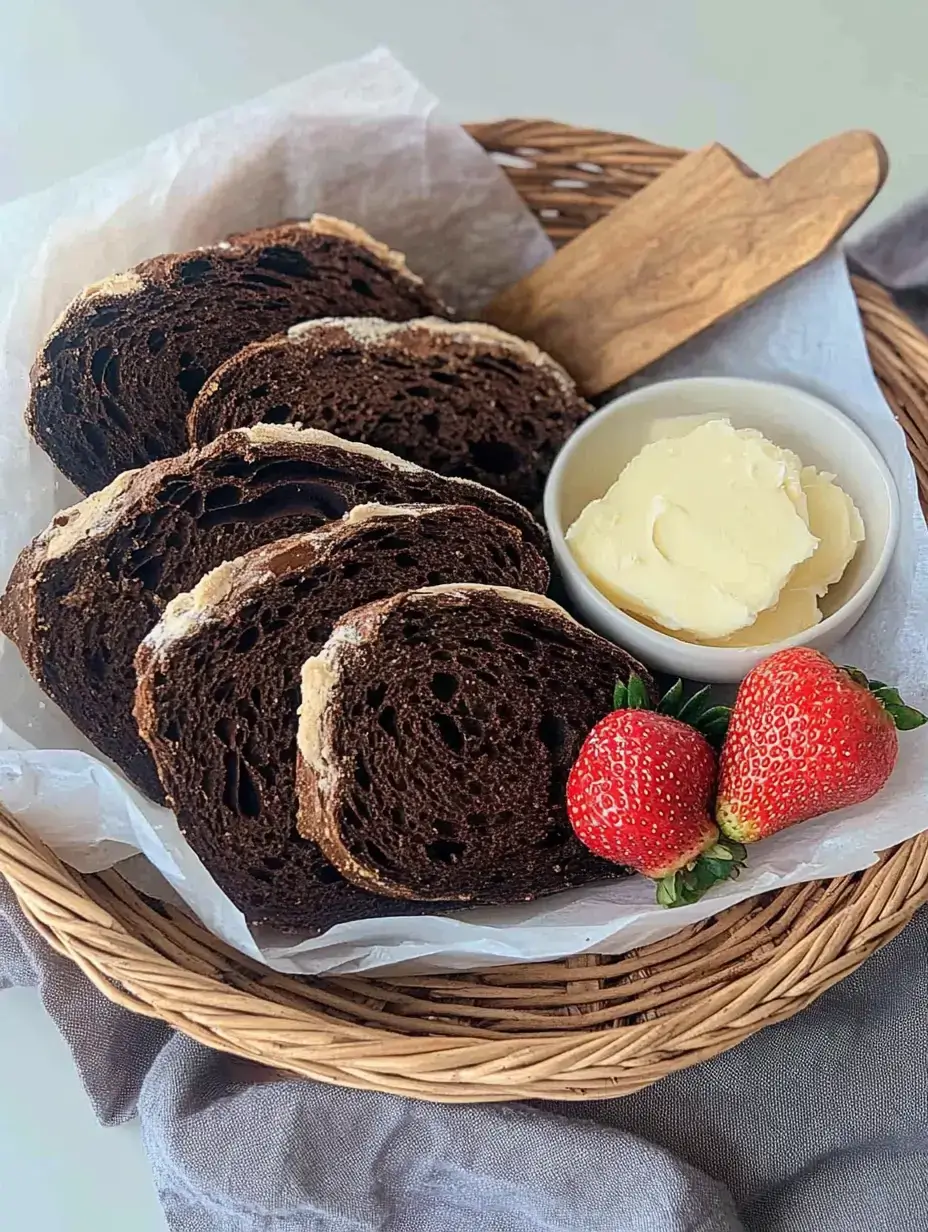
Making the perfect chocolate sourdough bread is all about shaping and scoring. These steps are key in bread crafting, especially artisan baking. Let’s look at how to shape, score, and prepare your chocolate sourdough for baking.
Basic Shaping Techniques
Start by gently handling your chocolate sourdough. Fold the dough over itself to build tension on the surface. This helps it rise beautifully in the oven. For a round loaf, hold the dough in your hands and rotate it on the counter.
Artistic Scoring Patterns
Scoring is where creativity meets artisan baking. For chocolate sourdough, choose patterns that match its rich color. A simple cross or leaf pattern is great.
Use a sharp lame or razor blade for clean cuts. The depth of your score is important. Aim for about 1/4 inch deep to see your bread open up in the oven.
Pre-bake Preparation
Before baking, let your chocolate sourdough rest in a proofing basket or bowl. This final rise is key for flavor. Dust the top with rice flour to prevent sticking.
When it’s time to bake, gently turn out your dough onto a baking sheet or into a preheated Dutch oven. Your beautifully shaped and scored chocolate sourdough is now ready for the oven!
Baking Environment and Temperature Control
Mastering bread baking techniques is key to making perfect homemade bread. For chocolate bread recipes, controlling your baking environment is crucial. Let’s look at how to get the best conditions for your chocolate sourdough.
Steam Generation Methods
Steam is important in bread baking. It helps make a crispy crust and improves oven spring. Here are ways to create steam in your home oven:
- Place a pan of hot water on the bottom rack
- Spray water into the oven using a mister
- Use a Dutch oven to trap moisture
Optimal Baking Times
Baking times depend on your chocolate bread recipe. Bake at 450°F for 20 minutes with steam. Then, reduce to 400°F for another 20-25 minutes. Use a thermometer to check for an internal temperature of 205°F for doneness.
Cooling and Storage
Proper cooling is key for your homemade bread. Let it cool on a wire rack for at least an hour before slicing. Store your chocolate sourdough in a paper bag or bread box at room temperature for 2-3 days. For longer storage, slice and freeze for up to 3 months.
Troubleshooting Common Issues
In bread crafting, especially with chocolate sourdough bread, you might face challenges. Let’s address common problems to refine your artisan baking skills.
- Dense crumb: Often caused by underproofing. Extend bulk fermentation time or slightly increase room temperature.
- Gummy texture: Resulting from underbaking. Increase baking time or temperature.
- Poor crust development: Ensure your oven is preheated. Use a Dutch oven or create steam for a better crust.
- Lack of rise: Check your starter’s activity and ensure proper kneading.
- Burnt chocolate: Use Dutch process cocoa or add chocolate later in the mixing process.
Remember, every loaf is a chance to learn. Keep experimenting to master your chocolate sourdough bread.
Variations and Flavor Combinations
Make your chocolate bread recipe even better with exciting flavors. Adding extra ingredients can give you unique twists on the classic bread. Let’s look at some tasty options to make your baking more fun.
Adding Chocolate Chips
Boost the chocolatey flavor of your bread with chocolate chips. Use dark, milk, or white chocolate chips for extra flavor. For a richer taste, try chopped chocolate bars instead.
Nuts and Dried Fruits
Add texture and complexity with nuts and dried fruits. Chopped walnuts, almonds, or pecans add a nice crunch. Dried cherries, cranberries, or apricots add a tangy sweetness that goes well with cocoa.
Spice Combinations
Spices can turn your cocoa bread into a fragrant masterpiece. Try these combinations:
- Cinnamon and nutmeg for a warm, comforting flavor
- Cardamom and orange zest for a bright, citrusy twist
- Chili powder for a subtle heat that enhances the chocolate
Try these additions to make your chocolate sourdough bread perfect. Remember to adjust the liquid when using dried fruits to keep the right texture in your baking.
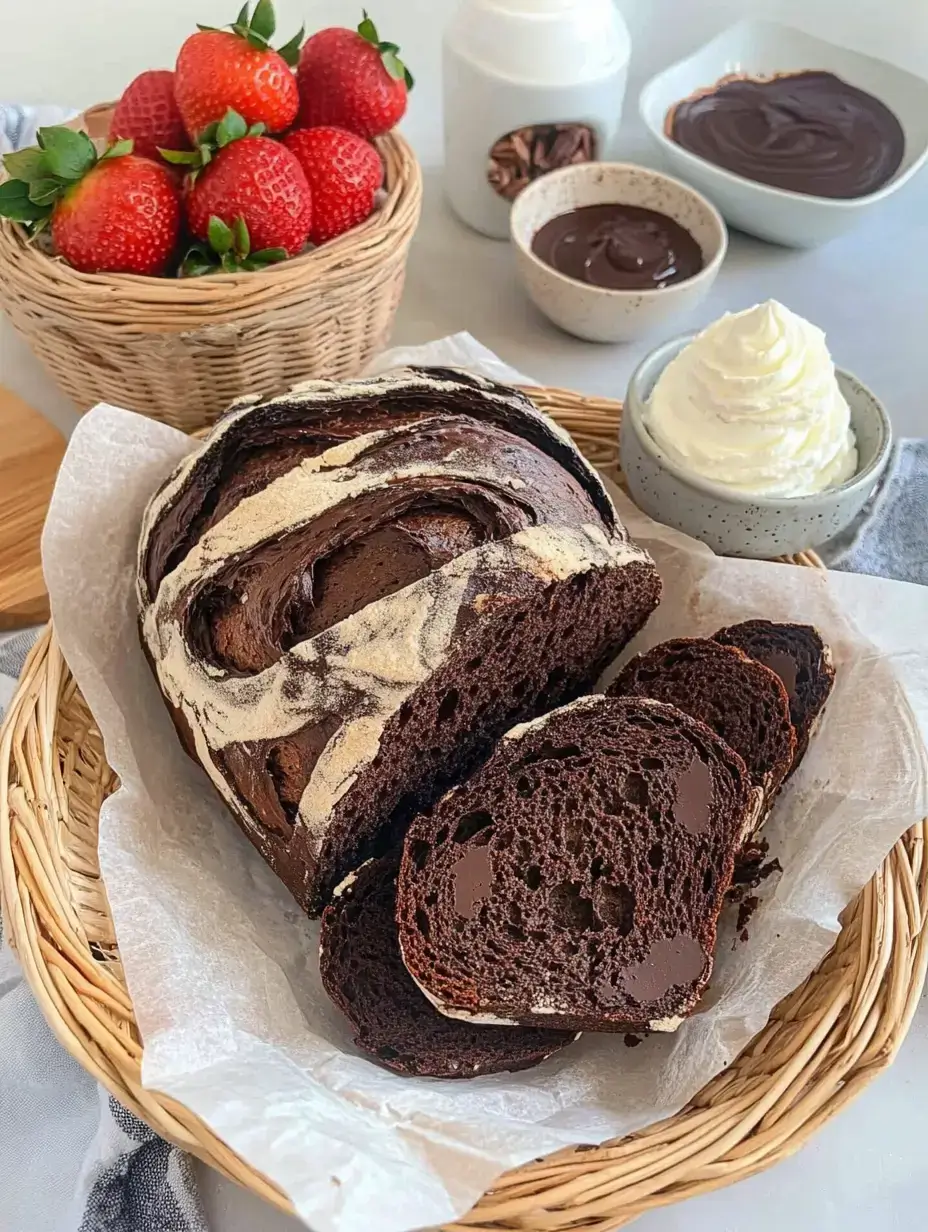
Conclusion
Chocolate sourdough bread is a delightful blend of artisan baking and rich cocoa flavors. Making this bread combines science, art, and patience, offering a rewarding baking experience.
You can personalize your loaves by adding chocolate chips, nuts, or dried fruits. Experiment with different cocoa types and spices to create your own unique variation. With each bake, your skills and results will improve.
FAQ
Q: What makes chocolate sourdough bread unique?
A: Chocolate sourdough bread is special because it mixes cocoa’s rich taste with sourdough’s tangy flavor. This makes the bread both tasty and good for you.
Q: How does cocoa powder affect sourdough?
A: Cocoa can slow down fermentation a bit because of its acidity. But, it also gives extra nutrients to the yeast and bacteria. This can make the bread taste more complex.
Q: What type of cocoa is best for chocolate sourdough bread?
A: Dutch-processed cocoa is great for its mild flavor and dark color. Natural cocoa powder gives a stronger chocolate taste. Choose based on what you like and your recipe.
Q: Does chocolate sourdough bread require special baking techniques?
A: Chocolate sourdough baking is similar to regular sourdough. But, it might need lower temperatures to avoid burning the cocoa. Steam at the start is still key for a good crust.
Q: How can I achieve a more pronounced chocolate flavor in my bread?
A: For a stronger chocolate taste, mix cocoa powder with melted dark chocolate. A bit of espresso powder can also boost the chocolate flavor without adding a coffee taste.
Q: What whole grains work well in chocolate sourdough bread?
A: Whole wheat, spelt, and rye are good with chocolate sourdough. They add nutrition and improve the bread’s taste and texture. Start by replacing a bit of white flour with whole grains.

